| LabGuy's World:1976
Quasar VR-1000 Great Time Machine
New Addition 02.01.26 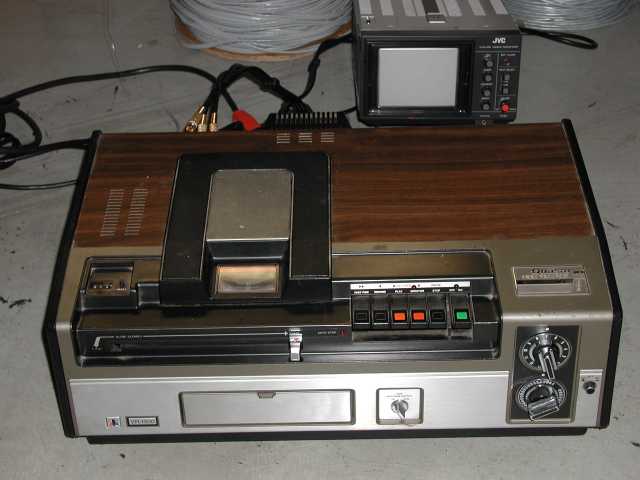 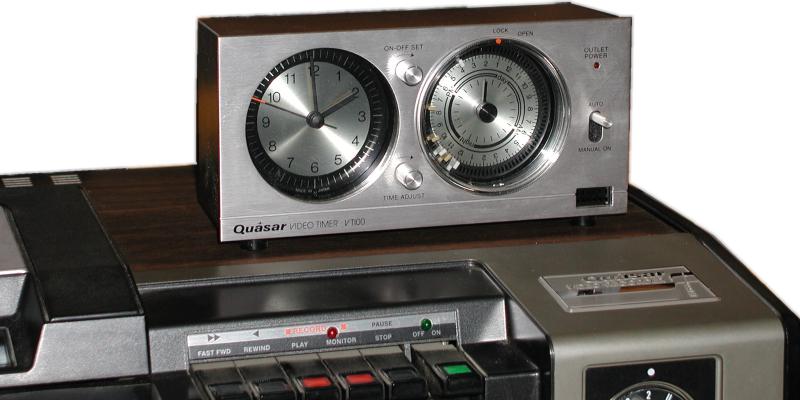
1976 Quasar VR-1000 Great Time Machine and matching VT-100 Mechanical Timer Vintage: Mid 1970s. This is a VX format machine. This is the only model VCR ever manufactured in this format! (That I know of!) It uses a unique cartridge, with coaxial stacked reels of tape and in cartridge scanning. The head drum actually intrudes into the cartridge. The sliding lever, in front of the cartridge door in the photo, unscrews a plastic plug from the cassette for operation. After a tape is viewed, the sliding lever is moved to the left and the plug is screwed back into the cassette! Very Rube Goldberg, indeed! The tape is one half inch in width. The video recording system consists of a one head, full alpha wrap design. This gives twice the tape to head speed of two head designs. This is also why the plug is needed in the cassette. The tape is already pre wrapped in the full loop necessary to encompass the drum. These machines made very nice video and had cartridges up tot two hours in length. Unfortunately, the tape cartridge is larger than most VCR's today! The small monitor, seen in the background of the first photo, is my JVC 5" color monitor and is not part of the VCR. The second photo is of the VT-100 mechanical timer. To program this, you remove the plastic cover on the right hand clock face and poke little pins into slots corresponding to the times you want the VCR to start and stop. The timer just turns the AC power off and on to operate the VCR deck. Being mechanical, you just put in a tape, press the lever to record, and activate the timer. It will repeat the start stop times every day until disabled. The VCR would stop automatically if the tape reached the end also. This would be perfect for capturing soap operas! 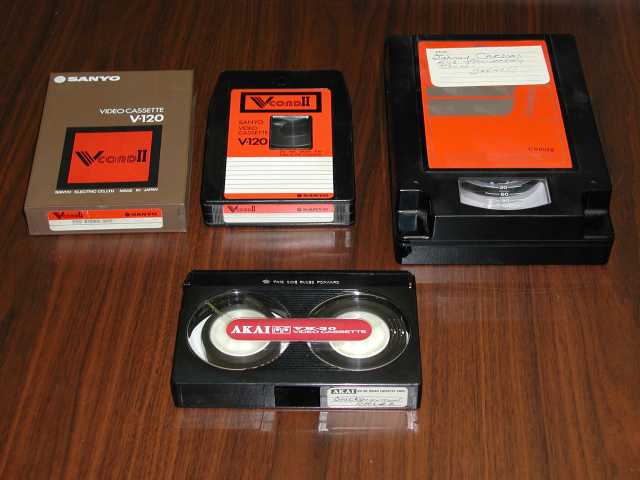 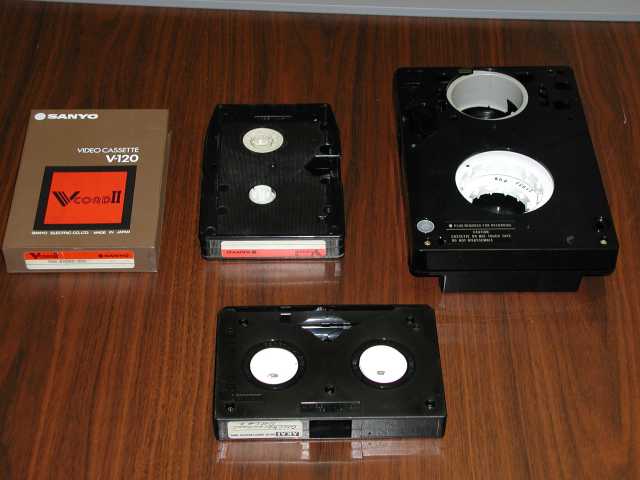 Update Information 02.04.04 . 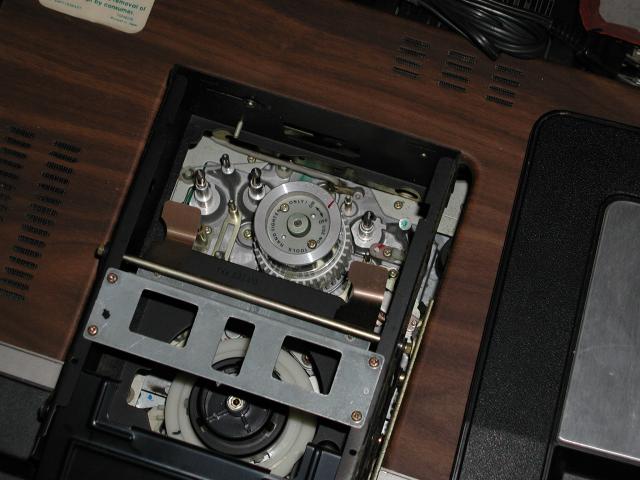 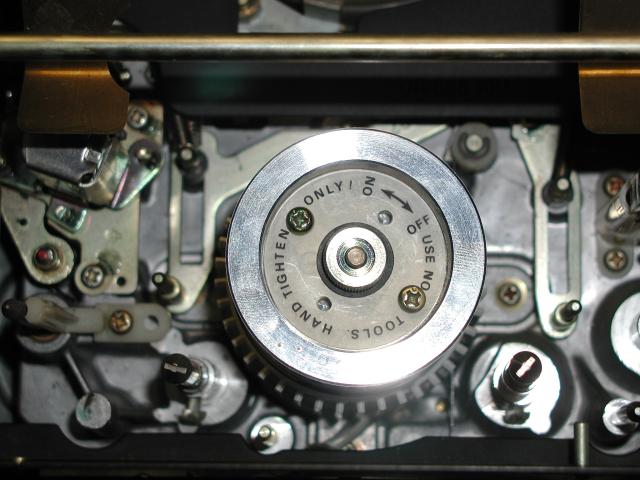 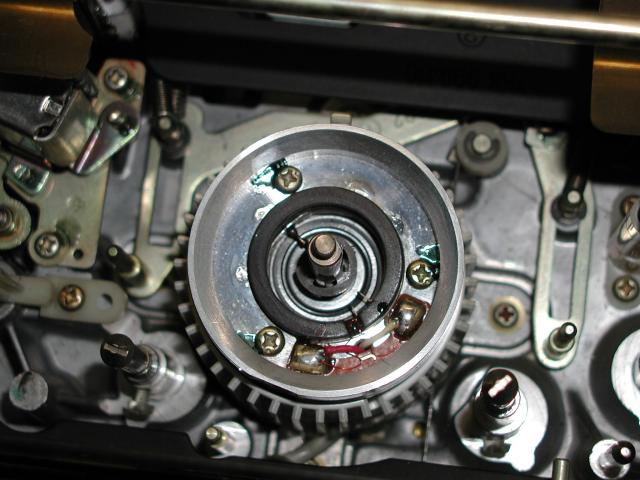 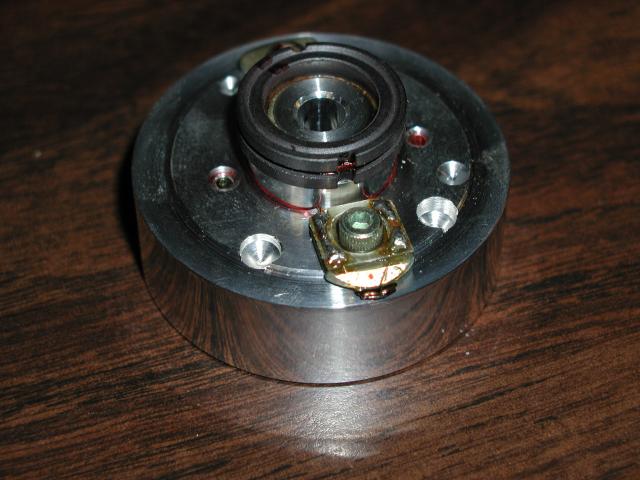 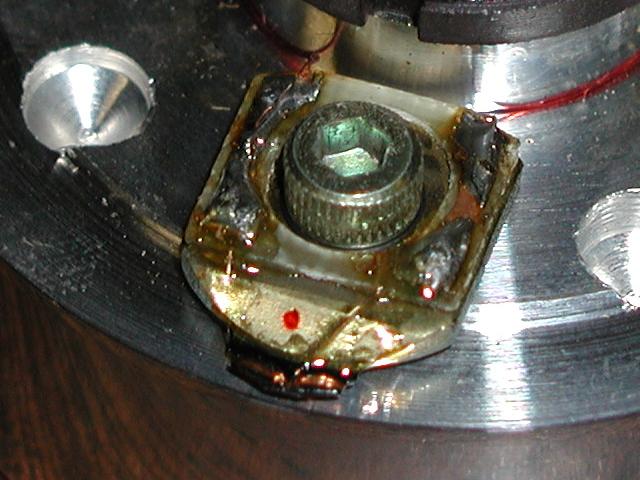 This head wheel is 1 and 7/8 inches across. That gives a circumference of roughly 6. 08 inches. Rotating at 59.94 RPS (for NTSC) gives it a head to tape writing speed in the vicinity of 365 IPS. Not bad at all. These machines produce very respectable pictures with fine detail and rich saturated colors. NEEDED: Service literature for this beauty! [HOME]......[VIDEO RECORDERS MUSEUM] Last updated: January 09, 2005 |